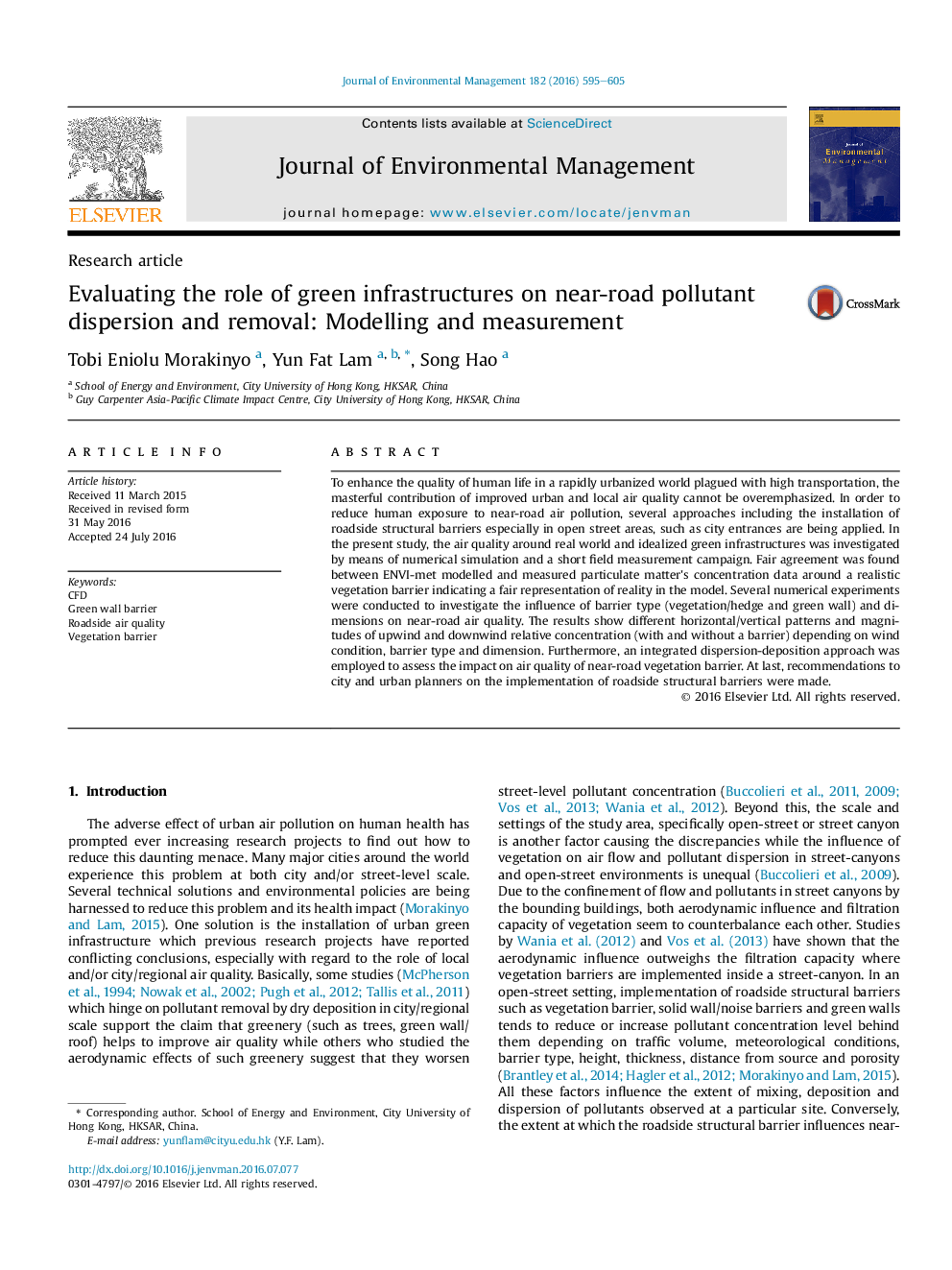| Article ID | Journal | Published Year | Pages | File Type |
|---|---|---|---|---|
| 7479271 | Journal of Environmental Management | 2016 | 11 Pages |
Abstract
To enhance the quality of human life in a rapidly urbanized world plagued with high transportation, the masterful contribution of improved urban and local air quality cannot be overemphasized. In order to reduce human exposure to near-road air pollution, several approaches including the installation of roadside structural barriers especially in open street areas, such as city entrances are being applied. In the present study, the air quality around real world and idealized green infrastructures was investigated by means of numerical simulation and a short field measurement campaign. Fair agreement was found between ENVI-met modelled and measured particulate matter's concentration data around a realistic vegetation barrier indicating a fair representation of reality in the model. Several numerical experiments were conducted to investigate the influence of barrier type (vegetation/hedge and green wall) and dimensions on near-road air quality. The results show different horizontal/vertical patterns and magnitudes of upwind and downwind relative concentration (with and without a barrier) depending on wind condition, barrier type and dimension. Furthermore, an integrated dispersion-deposition approach was employed to assess the impact on air quality of near-road vegetation barrier. At last, recommendations to city and urban planners on the implementation of roadside structural barriers were made.
Keywords
Related Topics
Physical Sciences and Engineering
Energy
Renewable Energy, Sustainability and the Environment
Authors
Tobi Eniolu Morakinyo, Yun Fat Lam, Song Hao,
